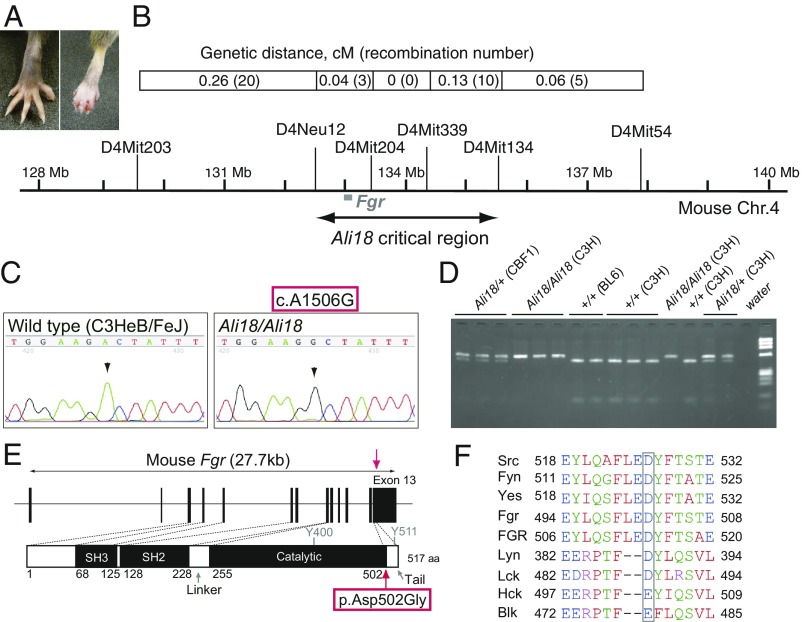Fig. 1.
Positional candidate cloning of the Ali18 mutation. (A) Ali18/+ (Right) and wild-type C3HeB/FeJ (Left) hind paws. Ali18 mice show reddening and swelling in peripheral paws. (B) Genetic map and the critical interval of the Ali18 locus. The complex modifier effects from the C57BL/6J genetic background prevented further narrowing down of the region. (C) By Sanger sequencing of candidate genes in the region, a point mutation (c.1506A > G) in exon 13 of Fgr, a member of the SFKs, was detected. (D) Mbo II restriction enzyme digestion of PCR products spanning exon 13 correlated to the swollen paw phenotype. Genetic background is described as C3H (C3HeB/FeJ), BL6 (C57BL/6J), and CBF1 (F1 from C3H and BL6 crossing). Ali18 mice were originally derived from C3H parents. (E) Schematic diagram of the p.Asp502Gly (D502G) amino acid change induced by c.1506A > G. Y400 and Y511 indicate the autophosphorylation site and the C-terminal regulatory phosphorylation site, respectively. (F) Alignment of Src family tyrosine kinases. Square encompasses the amino acid residues exchanged by the c.1506A > G mutation.

